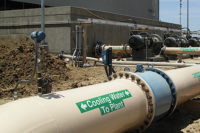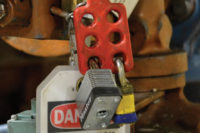He and his team moved a delicate, 50-foot-wide circular electromagnet 3,200 miles, around the Gulf of Mexico, up the Mississippi River to the Fermi National Accelerator Laboratory in Illinois with the aid of strategically-placed directional signs.
Why all the fuss?
The trip cost between $2 million and $3 million, compared with the $30 million it would take to build a new one at Fermilab, where its powerful beams will help scientists better their understanding of how the universe works.
Industrial relocation can be complicated, time-consuming and often dangerous projects to help companies make money, save money or increase productivity. For safety’s sake, it’s best to take a holistic view of these projects. This includes:
- Ensure safe passage of people and machines
- Crisis management
- Feasibility studies
- Budgets
- Hiring and managing contractors
- Fabrication
- Permitting
- Electrical wiring
- Mechanical assembly
Reasons to relocate
Industrial relocation consultants know the key milestones companies face: exploring new energy sources to run operations more efficiently; consolidating space, strengths, and people; available and affordable real estate; corporate acquisition or bankruptcy; seeking tax breaks; and environmental, health and safety issues such as brownfields.
Label the cable, if you’re able
When companies reorganize or relocate, changes often involve telecommunications facilities as small as closets which are typically located in places no one really wants to go — the lowest real estate value in any building. These cables connect phones, alarms, servers, computers, and video images. Months or years of filth add to the already confusing state of most buildings’ telecommunications rooms.
Each cable needs to be tagged on both ends with a unique identifier number. Cable labels are typically 18 characters long, and should include outlet location and closet information. Add to this the fact that most cable ports are gapped by very little space and the box may contain dozens or even hundreds of ports, accounting for quite a mass of wires. For a major university, Sean Emmett, Leaden and Associates, ran some 10,000 to 12,000 cable labels. A recent build up for a semiconductor data center required 80,000 data cable labels.
UL labeling timing challenges
UL Listing requirements can be crucial to being operational with your machinery along with having your racks permitted properly so you can actually use them right away, according to Lori Tooker from Trendzitions.
The UL Listing process is very tricky because you are supposed to have your “UL Sticker” on your machinery prior to operation, yet you can’t get that final label until your equipment is relocated, hooked up and operational. Most likely a “temporary certificate of occupancy” is issued.
Big, visible tasks garner the most attention. But it’s often the more personal touches that are remembered and appreciated.
Personal touches
“The biggest problem with moving is the lack of direction companies provide all stakeholders. Taking small steps like labeling cubicles so people know where to report on Monday and setting up lost and found areas has a huge positive impact on any kind of move,” says consultant Brenda Luper.
Address employee concerns prior to moving or the consequence is lost time and money in retrofitting, she says. Communicate frequently and use all available forms of communication from signs and labels to smart phones and thank you notes.
Plan it, man
Another relocation expert, Seraph, begins each manufacturing relocation project with detailed planning, and then carefully moves into managed implementation.
Seraph’s Ambrose Conroy develops a management plan to set a common understanding of the goals, risks and expected benefits of the project. Once a management plan has been set, Seraph moves into detailed planning for implementation and establishes a project management office (PMO). The PMO is the control mechanism through which metrics are established and tracked to drive success. Transferring physical equipment is only one part of the puzzle. Tribal knowledge, systems, processes and procedures round out the challenge. Seraph relies heavily on visual management and controls to support transfers.
About half the time Seraph is engaged, the client has already picked out a site, with enough space, but they have not done a detailed CAD drawing or laid out the floor. Taping the floor (a process called floor marking) in the receiving sites for all moves, and having labels produced for both the floor and the pieces of equipment that will be placed there ensures safety. Workers are better able to see clearance issues and see that adjustments can be made prior to equipment hitting the floor. Structural support pillars that are not inside of CAD data are almost always the first things the team identifies when taping and labeling the floor.
When all goes smoothly, all stakeholders in the move will have their needs met, including: realistic timelines and budgets; access to decision makers; precision and predictability; personal touch; environmental consciousness; concern for community, nearby businesses, and traffic flow.
When the dust has settled and no major accidents have occurred, review the whole process and ask these questions: Is everyone safe? Are machines that were moved or disassembled working properly? What would you do differently next time?



